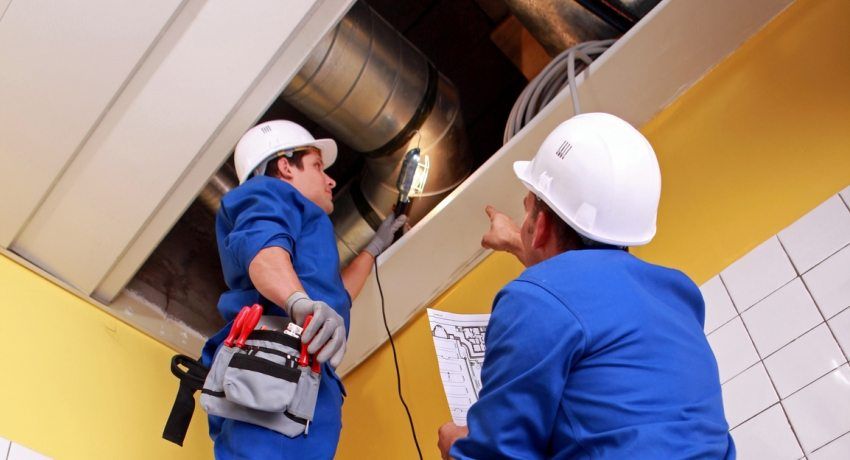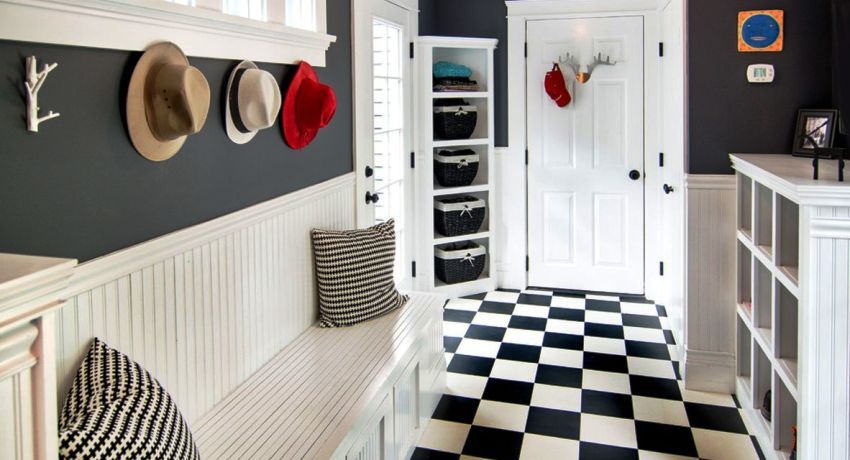Wallpapering is a complex and time-consuming process that does not tolerate errors. With the wrong choice of glue or violation of the application technology, everything will have to be redone. The nuances of sticking largely depend on the type of material. Today, the most popular vinyl wallpaper, which has proven to be durable, durable and does not fade over time. When choosing it for wall decoration, you should know how to glue vinyl wallpaper on a paper basis correctly.
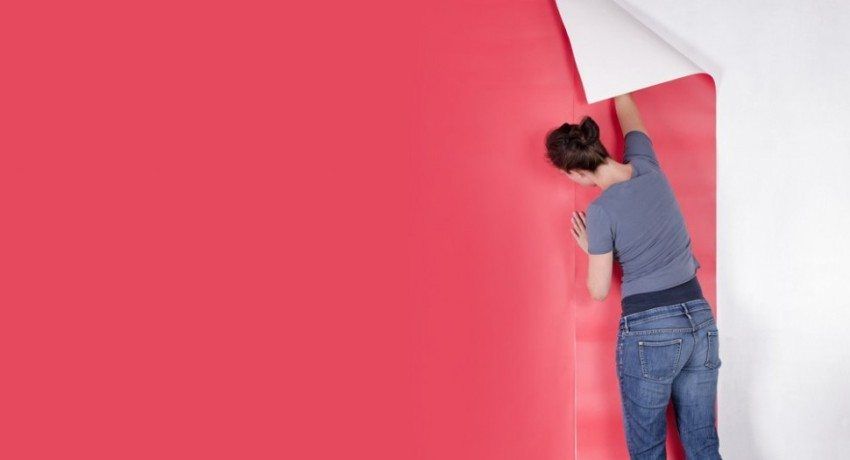
Vinyl Wallpaper Features
Vinyl is a PVC layer applied to a paper or non-woven base. Its main advantage is primarily in a long service life. In addition, vinyl does not tarnish under the influence of direct sunlight, which is very important for wallpaper with a bright pattern, tolerates high humidity, which allows the use of such a coating in the bathroom or in the kitchen.
The only thing that can adversely affect the vinyl coating is the temperature drops. Therefore you should not stick it in close proximity to sources of strong heat, for example, near the fireplace or above the gas stove.
In addition, the material is characterized by poor breathability. The problem can be solved by the acquisition of special wallpaper with micropores. This option is well breathable, but successfully resists the accumulation of moisture, so you can not be afraid that through the pores under the wallpaper water penetrates.

There is a common myth that vinyl is dangerous to human health. It did not appear from scratch, but only certain varieties of paper-based vinyl wallpaper have such a disadvantage. Reviews of poor quality products from unknown manufacturers will really be unflattering. If you take wallpaper for the walls of a reliable manufacturer, the production of which complies with all environmental and sanitary safety standards, they will be absolutely harmless to your health.
It is worth highlighting the following positive qualities of vinyl coating:
- It can be glued to various types of surfaces (concrete, plaster, wood, chipboard, etc.).
- Due to the density of the vinyl layer, such wallpaper masks cracks and irregularities of the walls. However, this requires the use of thick varieties of coatings.
- A wide variety of design options, which facilitates the choice of coverage for a specific interior.
- Ability to select rolls of standard or meter wallpapers. How to glue and those and others will be discussed below.
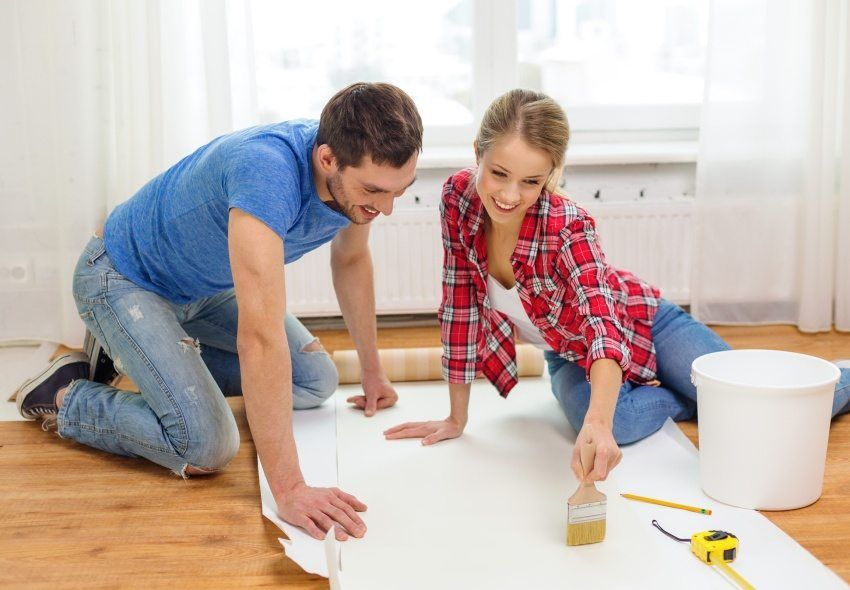
The basis of the vinyl wallpaper can be paper or non-woven. Each of these materials has its own characteristics, advantages and disadvantages that must be considered before sticking. Non-woven wallpapers have the following advantages:
- glue is applied directly to the wall, they do not need to soak the wallpaper, which greatly simplifies the process of gluing and makes it faster;
- non-woven base stronger than paper, respectively, the finished product will also have greater strength and durability;
- unlike vinyl paper-based wallpapers, sticking non-wovens will effectively hide surface irregularities and cracks in walls.
Disadvantages of non-woven base:
- non-elastic non-elastic, therefore it is quite difficult to glue roundness, protrusions and relief surfaces with wallpaper;
- non-woven base is quite transparent, so any stains on the walls or the remnants of previous coatings will appear through.
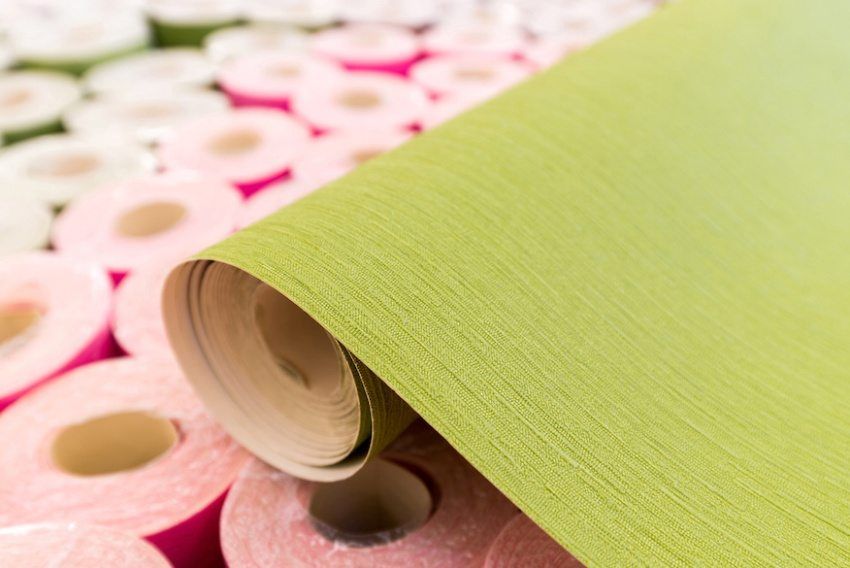
The advantages of paper-based wallpaper:
- the paper stretches well, which means that you can easily glue overhangs, niches, columns, corners, etc .;
- paper has a high density, the base of the surface will not show through it.
Disadvantages of paper base:
- glue should be applied not only on the wall, but also on the wallpaper;
- paper quickly absorbs liquid, which increases the consumption of glue, and also requires high speed;
- paper wallpaper is easy to tear or scratch;
- paper grip with the wall surface is quite long, so the wallpaper strip must be pressed against the wall for some time.

Given the characteristics of the materials, you can easily learn how to quickly and correctly glue vinyl wallpaper on both paper and non-woven base.
Helpful advice! Properly glue paper wallpaper (like non-woven) – not as difficult as it may seem at first glance. The main rule is to carefully prepare the walls; the final result will depend directly on this.
Vinyl wallpaper can be classified according to the type of surface structure (embossed or smooth) and according to the method of its finishing (embossed or profile). Also, many properties depend on how the top decorative layer is applied to the wallpaper:
- silk screening is the lightest type of vinyl coating. The top layer consists of a thin PVC, which cause a variety of textures. This type is characterized by a wide variety of design options and similarity in appearance with silk fabric;
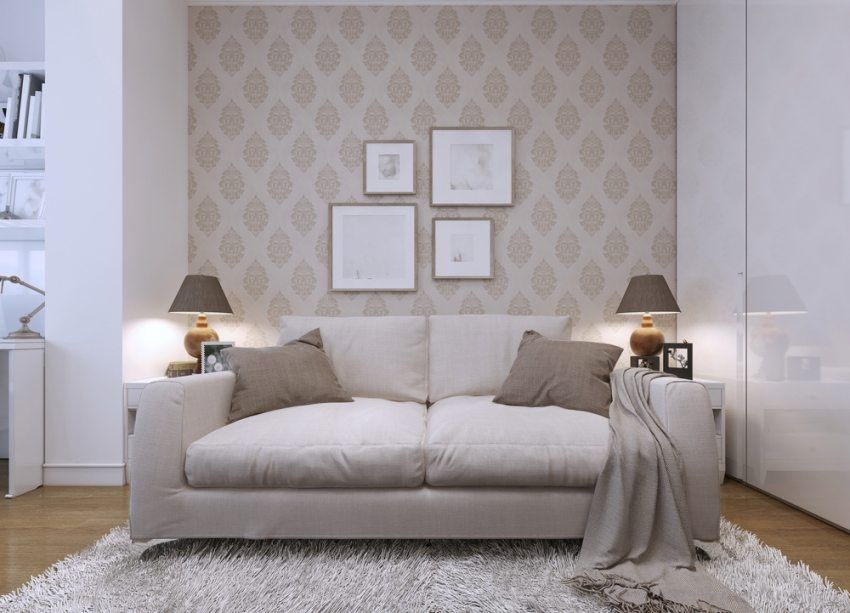
- Compact vinyl is a heavier coating variant, the upper layer of which imitates various materials (fabric, stone, brick, plaster, wood, and many others);
- heavy vinyl – the thickest version of the coating, which is characterized by the highest surface relief. It can be styled under the skin, bulk embroidery and other materials. Due to the density of the vinyl layer, high strength is provided, and it is also possible to hide cracks and irregularities of the walls;
- Chemical embossed wallpaper – different from other types of smooth glossy surface from which you can easily remove dirt. Among the advantages of this type can be distinguished high resistance to moisture, the effects of detergents and direct sunlight. Another name for these wallpapers is washable.
A separate type of wall covering – wallpaper for painting. You can glue vinyl wallpaper on a paper basis (both on the walls and on the ceiling) and paint in any color you like. The main advantage of such a coating is the possibility of multiple repainting.
The choice of a suitable type of wallpaper depends on the characteristics of the walls, their quality, the purpose of the room and the desired style in the interior.
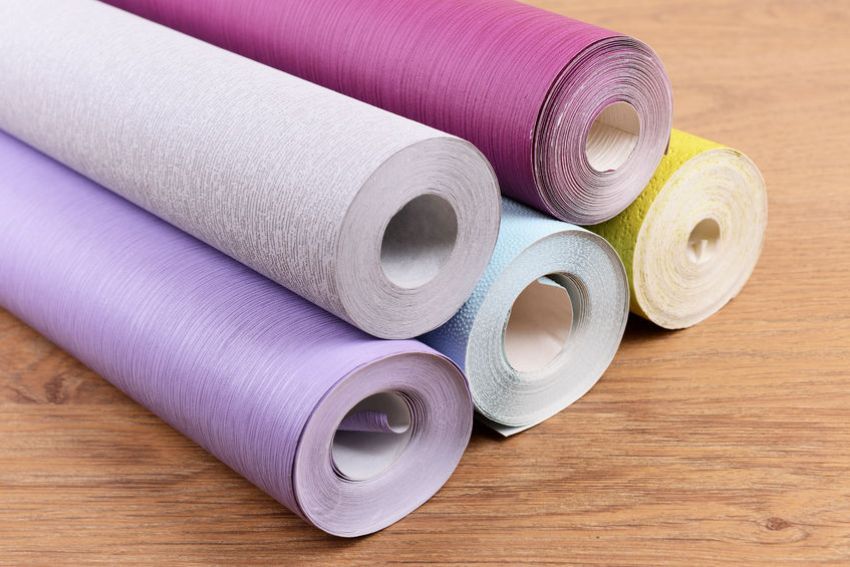
Properly chosen glue for vinyl wallpaper on paper base is the key to successful gluing of the coating. Poor composition can lead to the formation of bubbles, irregularities and the backlog of wallpaper from the wall. Experts advise to give preference to products of foreign manufacturers, which, although more expensive than domestic, has a higher quality. The peculiarity of sticking in the case of vinyl coating is that the material itself is rather heavy, therefore the adhesive must be set quickly and well.
Vinyl wallpaper on non-woven base. How to glue correctly? Characteristic of wallpaper and their positive properties. How to self glue decorative fabric. Stages pasting, video process.
A good glue for vinyl wallpapers is one that fixes the canvas on the wall quickly, but not instantly, so that it is possible to fit the stripes along the joints, align it vertically and horizontally. In addition, the glue must prevent the development of mold and mildew under wallpaper. This is very important in the case of vinyl, as it does not allow air to pass through, and the appearance of microorganisms under the coating layer, alas, is not uncommon, especially at high humidity in the room.
Helpful advice! The consumption of each specific type of adhesive is specified in the instructions or on the packaging. It is a mistake to assume that the more glue, the better. On the contrary, the excess can leak through the seams and stain the surface of the canvas.
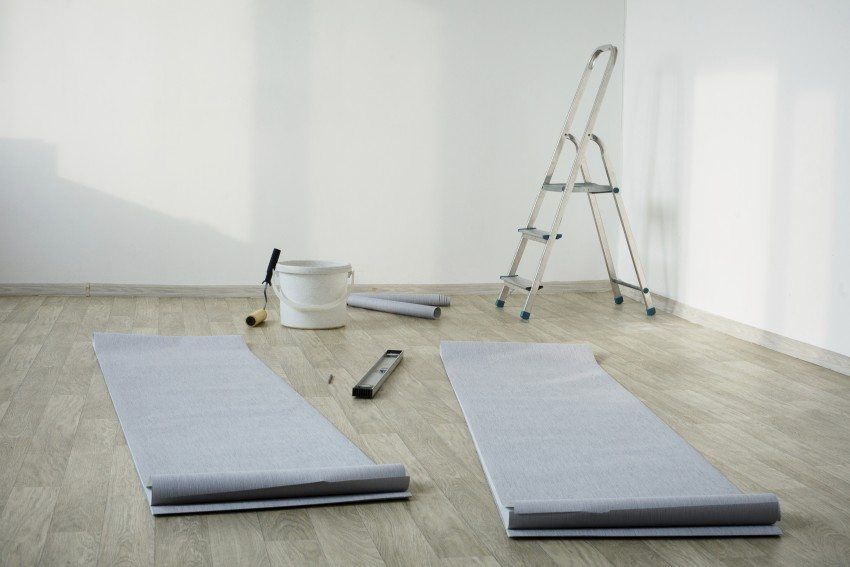
It is also undesirable to use all-purpose wallpaper glue for pasting vinyl. There are specialized compositions, each of which is suitable for work in certain conditions. Such conditions may include the type of surface on which the wallpaper is glued, the type of vinyl coating, the humidity in the room, and much more. Therefore, if you are not sure which adhesive composition is best for gluing, for example, foamed vinyl wallpaper on a paper basis on a concrete wall, then it is better to consult an experienced specialist.
It is important that the adhesive has the following characteristics:
- in the process of mixing should not form clots and lumps. They can subsequently lead to irregularities in the glued surface;
- must have anti-fungal properties, prevent the occurrence and development of mold;
- already prepared good glue can be stored for 24 hours, without drying out;
- in the packaging of the composition can be stored for several years;
- must be environmentally friendly and safe for human life and health;
- the process of preparation of the composition should be extremely simple and understandable even for those who have no experience in the field of such works.

Numerous themed videos “how to glue paper wallpapers” demonstrate a number of tools that may be needed in the process of doing the work:
- level or plumb to mark the lines of sticking on the walls, as well as a pencil or marker for drawing;
- brush for applying adhesive to the wall. You can also use a roller with a medium or short nap;
- large rubber roller – to smooth the already pasted canvas on the wall;
- a knife or scissors for cutting rolls and cutting holes for sockets and switches;
- ruler or tape measure;
- foam or soft cloth – remove excess glue at the joints;
- table or stepladder.
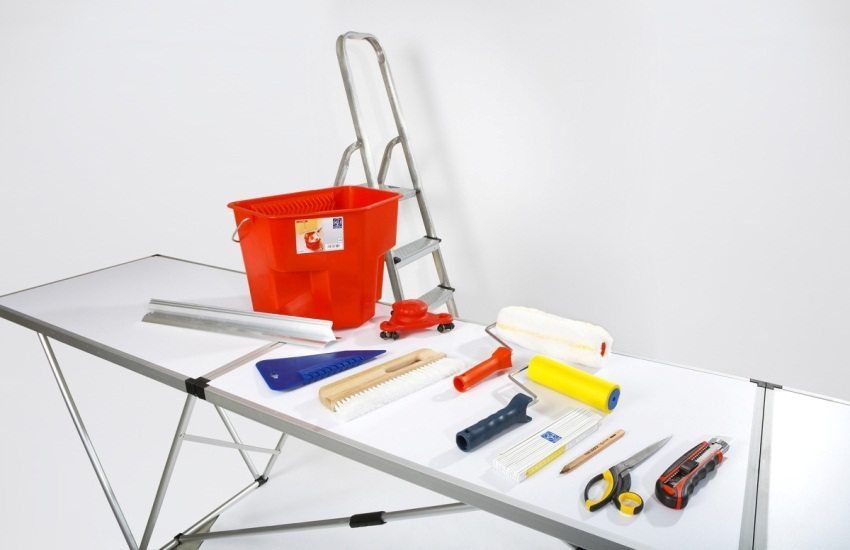
To glue the wallpaper in the corners of the room (both external and internal) is quite difficult, so the process is best done together, it will be faster and more efficient. A partner can hold a ladder, feed tools or cut off a new canvas while you paste the previous one.
There are several tricks of how to quickly and effortlessly remove the old coating from the wall. To do this, you will need a narrow and wide spatula, a special coating remover, a tool for punching the web and ordinary polyethylene film.
At first it is necessary to apply the softening solution or water with addition of detergent on old wall-paper. In this state, the coating is left for 15-20 minutes. Polyethylene film is needed in order to cover the furniture and close sockets and switches. After the wallpaper is soaked, they can easily be removed from the wall with a spatula.
In the event that an especially strong adhesive composition was used for gluing, and it is impossible to soak the old cloth, you can use sandpaper. This takes more time, but allows you to completely remove the old coating from the wall.
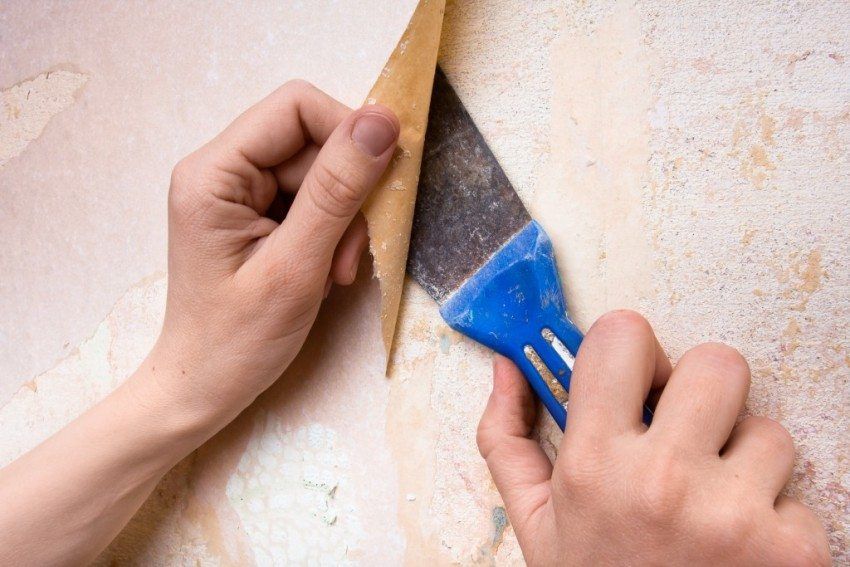
In order for the walls with the coating pasted on them to look as attractive as possible, they must be pre-aligned. This is especially true for owners of old apartments, whose walls do not differ ideal surface. The alignment method is selected depending on the deviation of the vertical. This parameter is checked using a level and a cord, and in the event that the deviation is only 5-10 mm, it is enough to simply treat the surface with a putty.
The starting layer of putty is recommended to put in two layers, between which you can lay a special paint mesh. This will prevent the occurrence of microcracks on the surface. The direction of the layers can be perpendicular to each other, so you align the surface in all directions.
During the work it is necessary to consider that the angle of inclination of the spatula determines the thickness of the layer, the smaller the first, the thicker the second.

The finishing layer is also applied in one or two steps, after which it is finally leveled using fine-grained emery paper. Under the sticking of wallpaper, this layer can not be applied, but it is required if painting is planned.
Labor-intensive and complex plastering should be applied when the wall is so uneven that it can be seen with the naked eye. To do this, it is best to use special cement-based plaster mixes that contain polymer additives. The presence of the latter allows you to not use the polymer mesh, as the composition is very durable. In residential areas with normal humidity, you can use the following types of plaster:
- lime-gypsum;
- lime-clay;
- lime-clay-gypsum;
- cement-lime.

Before proceeding to leveling the surface with plaster, it is necessary to thoroughly clean it from dirt and dust, and primed it. After that, along the edges of the wall, two vertical lighthouses are installed, between which intermediate ones are mounted. The alignment itself is carried out in three stages:
- Spray – putting liquid plaster with a layer approximately in 3-5 mm. The surface must be pre-wetted for better grip. This layer is a transition between the bulk of the plaster and the wall on which it is applied.
- Soil – the second layer is applied to the first layer, which should be about twice as thick. Its thickness can be 5-7 mm.
- Coat – finishing thin layer of plaster, with which smooth the uneven ground.
For very uneven walls, you can use sheets of drywall, which not only levels the walls, but also increases the level of heat and sound insulation in the room.
If the surface irregularities do not exceed 7 cm, then the sheets can be fixed on it using a special plaster composition. If the curvature is greater, then you will have to install a special frame, to which the plasterboard will be attached later. Fastening of sheets should be carried out with the help of self-tapping screws with a step of 30 cm. The joints between the sheets are sealed with plaster mortar, and the caps of the self-tapping screws are also plastered with it.
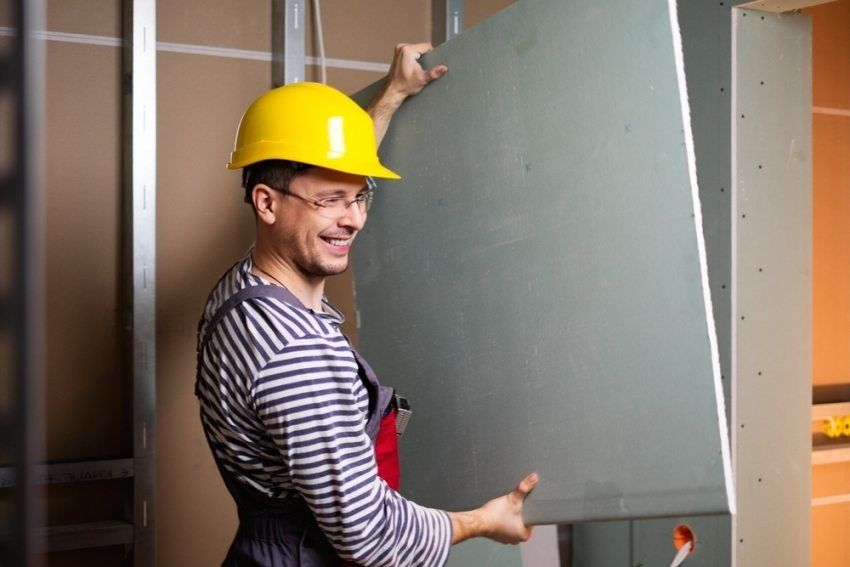
In conclusion, the plasterboard surface should be puttied, and only then proceed to the question of how to glue vinyl wallpaper on a paper basis. Need to smear or not wall with plasterboard with glue? – A frequent question, an unequivocal answer to which – yes, it is necessary. Wallpapering on drywall is using the same technology, which is also relevant for other surfaces.
Once you have decided on the type of coating and the variant of the adhesive composition, you can proceed directly to sticking. This is done in the following sequence:
- walls are being prepared. This process involves pre-drying the surface. If the wall has recently been plastered, the plaster should be completely dry. Otherwise, there is a high risk of wallpaper peeling;
Helpful advice! In order to check the dryness of the wall, you can stick a small strip of polyethylene on it and leave it overnight. If by the morning wet drops appeared on it, it means that the wall needs to be dried again.
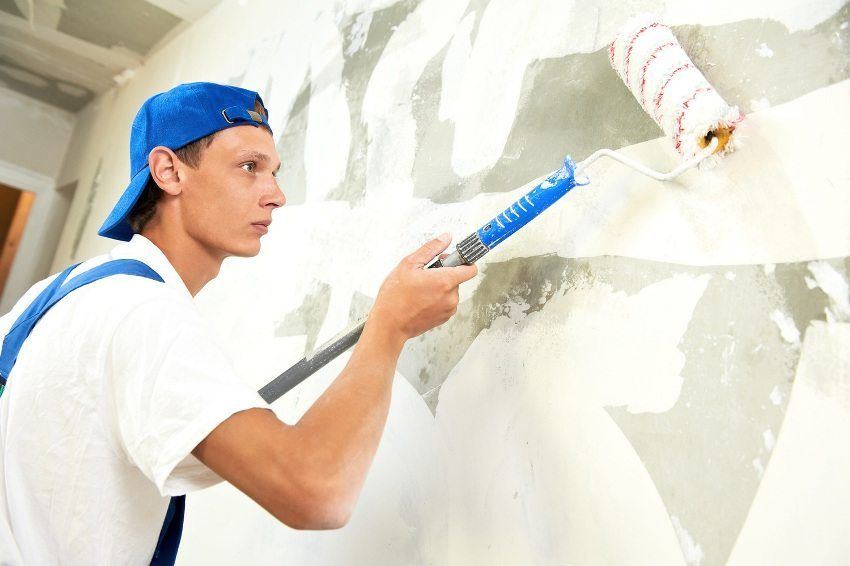
- primer is applied. This may be a special solution or the adhesive composition, which will later be glued wallpaper. The primer is designed to seal cracks in the walls and hide minor irregularities;
- in a special container, according to the instructions, the adhesive is diluted. It should be stirred for not less than 10 minutes, the solution should be homogeneous, without clots and lumps;
- using the level, the upper line is drawn, which will be a guideline for gluing the first sheet of the coating;
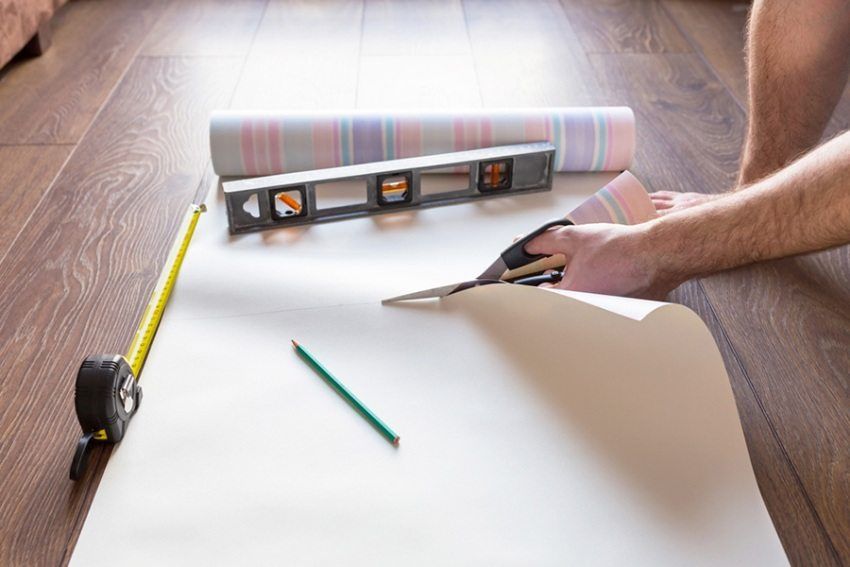
- the room is de-energized, all sockets and switches are removed from the walls. Holes for them in the canvas can be cut both before and after gluing. The main thing is to mark with a pencil exactly where to make the slits;
- Before sticking, make sure that there are no drafts in the room. It is not recommended to turn on the fans or air conditioners in the process and open the windows;
- each roll is cut into strips. It is recommended to leave an allowance of 10 cm in length. Before cutting with a tape measure and a pencil, cut lines are drawn;

- glue is applied on the prepared canvas. The solution should be applied evenly, well spreading the edges of the strip. It is very important not to leave dry, not missed areas, which later will not stick to the wall and create a blistering effect. The question of how to glue vinyl wallpaper on paper is discussed above;
- glue is applied on the wall. If you are using meter rolls, skip this step and proceed to the next;
- prepared canvases are glued to the wall. This should be done end-to-end, without overlap. The remains of glue, which appear through the seams, are removed using foam rubber or soft fabric;

- the edges that remain below and above are cut off with a blade or a clerical knife. This is best done when the sheet is already dry, otherwise the cut risks getting uneven.
How to stick vinyl wallpaper on a paper base in the corners and on the ceiling of the room? For these processes have their own subtleties, which will be discussed further.
The process of gluing wallpaper on the ceiling is carried out before the walls are glued.
To finish the ceiling is better to choose a lighter version of the vinyl, as heavy wallpaper can come off under its own weight. The rest of the difference with the pasting of the walls is minimal, but this process is more laborious, and it is in the case of the ceiling that the partner’s help is very useful.
When pasting the ceiling, it is recommended to remove all furniture and carpet from the room. The remaining items are covered with plastic wrap. To protect the face and head from glue, you should use a special hat and glasses.
From what angle to start wallpaper glueing is absolutely not important, but it should be borne in mind that this process requires special care. The task is facilitated if the angles in the apartment are even. If they have errors, they must be corrected, otherwise the end result will be unsatisfactory.
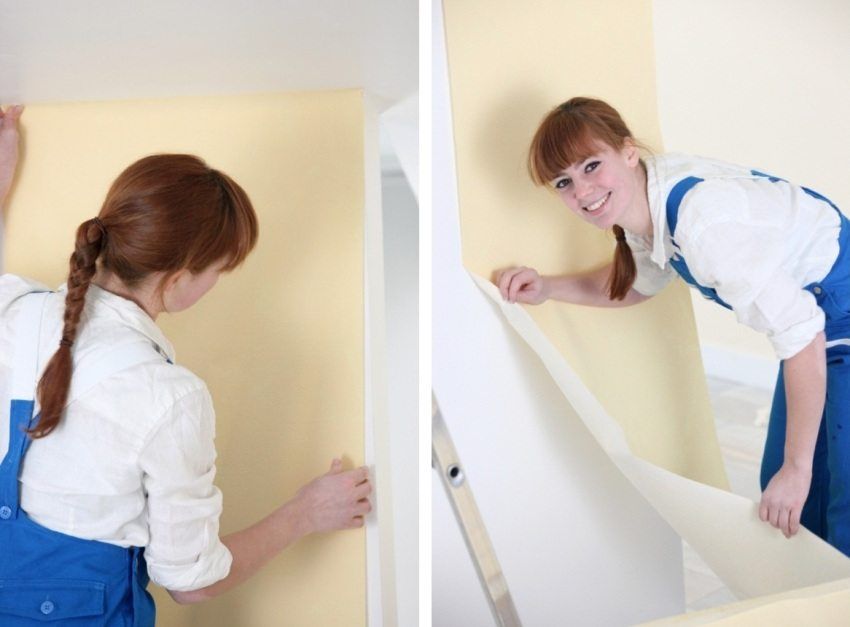
When sticking vinyl in the corners, it is necessary to cut through one of their joints. This means that when the angle is less than one strip, you need to measure the distance to it (from the pasted surface) and cut the canvas with an allowance of 3-4 cm. These centimeters will go to the perpendicular wall. Then you need to glue the second sheet overlap, and in this place carefully cut through both sheets. This way you will have a smooth and neat joint. At the junction of the wall is coated with glue, and the wallpaper is smoothed with a roller.
The answer to the question of how long the wallpaper will dry will depend on many factors. First of all, this is affected by how well the work surface was dried before gluing. Optimum environmental characteristics during drying and further sticking – the temperature is not lower than 19-21 ° С and the humidity is not more than 75%. At high humidity or low temperature, the wall can dry for a very long time, which, in turn, can affect the peeling of the wallpaper, their deformation and divergence at the joints.
Remember that it is possible to carry out other types of repair work only after the wallpaper is completely dry.
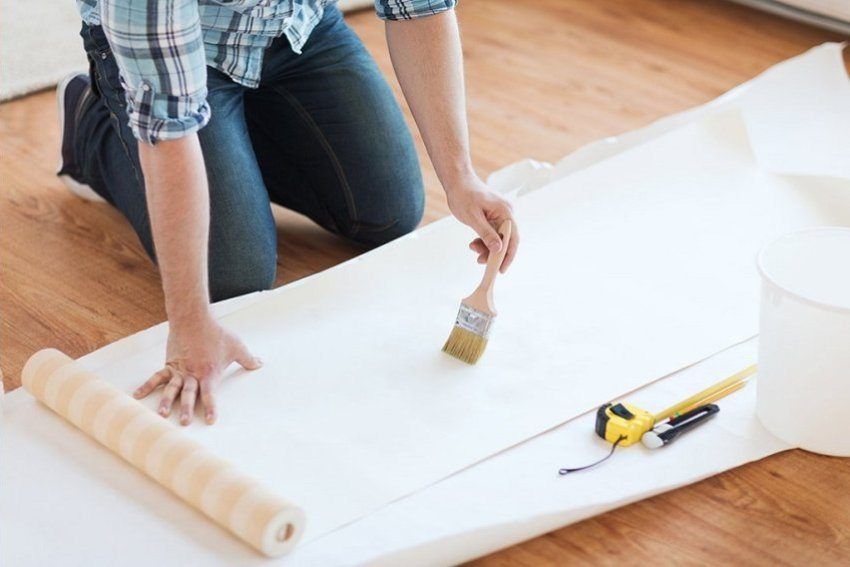
Also, the drying time of the wallpaper can be affected by the presence of drafts or airflow from the climatic equipment. Draft when sticking lead to the fact that the coating dries unevenly, and this leads to its deformation. If you do not want to re-glue the fabric several times, then do not use air conditioners, fans and other climate technology in the process of pasting the room, and also close all windows and doors.
The exact time of drying the canvas is quite difficult to determine, since it depends on the following factors:
- the type of glue used in the process;
- the amount of mortar applied to the wall;
- room temperature and humidity level.
The minimum time for drying the fabric on non-woven base is 24 hours. The paper base has a slightly shorter period. Time also depends on the density of the vinyl coating and the presence of micropores in it.

There are a number of common points that must be taken into account when sticking vinyl wallpaper:
- Vinyl conducts electricity well, so you need a crate wallpaper so that they do not come into contact with bare wiring, otherwise you risk injury;
- in the process of drying the canvas, having a paper base, is compressed. Therefore, you need to pay special attention to joints and seams. So that they do not diverge, wallpaper is recommended to overlap. They will prompt you on how to glue vinyl wallpapers on paper basis, video and photo instructions that can be easily found on the Internet;
- if you do not want the microclimate in the bedroom or children’s room to change significantly, then you should not use vinyl on the walls of these rooms. It’s all about its very low vapor permeability;

- no need to save on the quality of the coating and glue, it depends on them durability, wear resistance and attractive appearance of the wallpaper;
- for sticking cloths in rooms with high humidity wallpaper made of PVC will suit as well as possible, as they will protect the walls from moisture.
Do not be afraid to experiment, try pasting the walls with different wallpaper. Photos of combining wallpaper look very attractive, the main thing is to choose the right picture, color and texture. Use rolls of different thickness and type, apply original design solutions, combine tones and textures, and you will be able to create a stylish and memorable interior.
